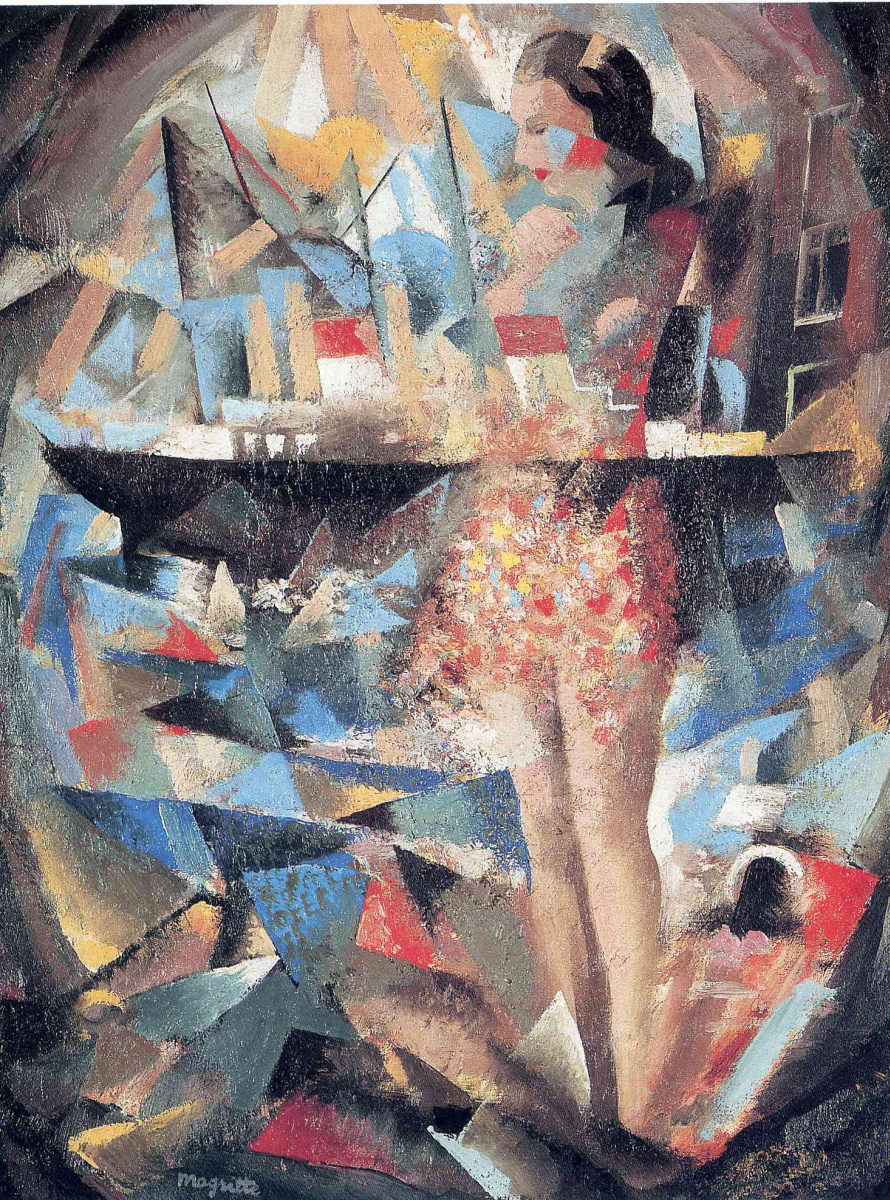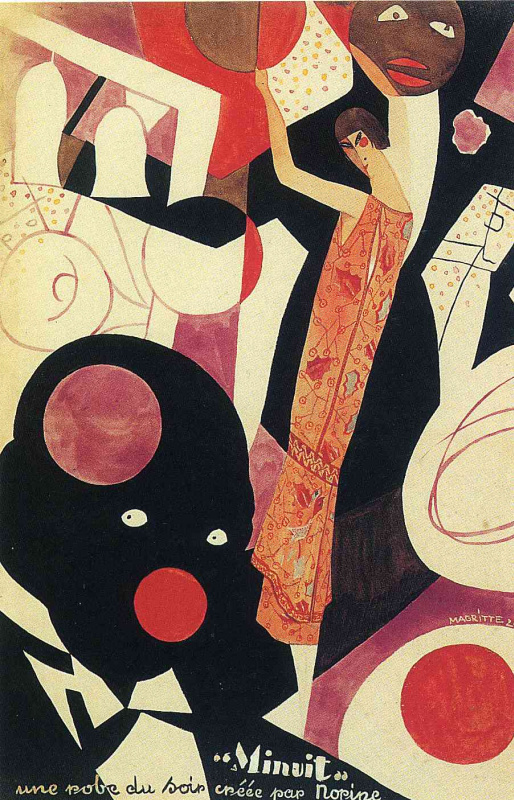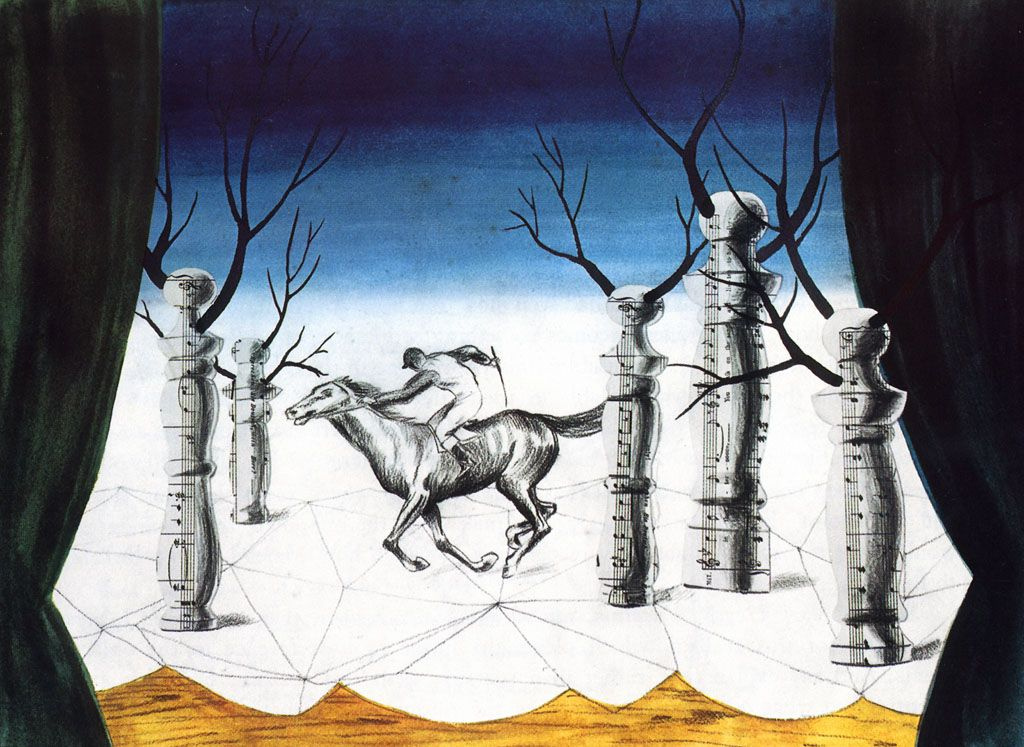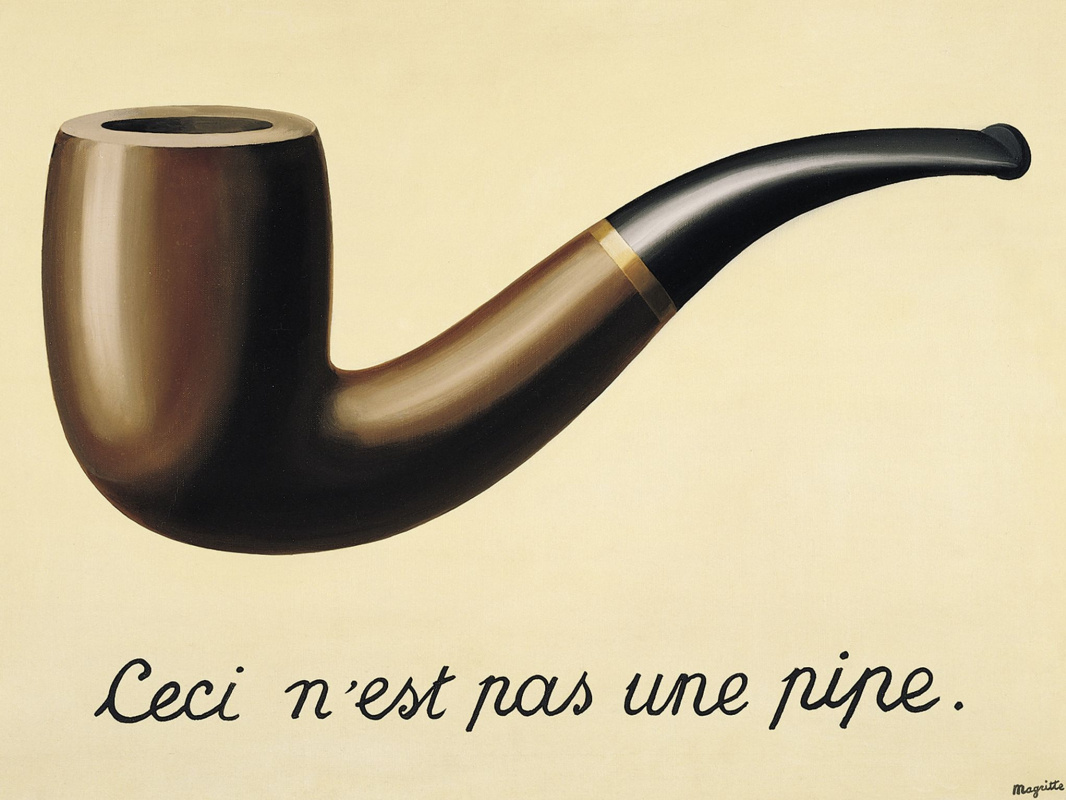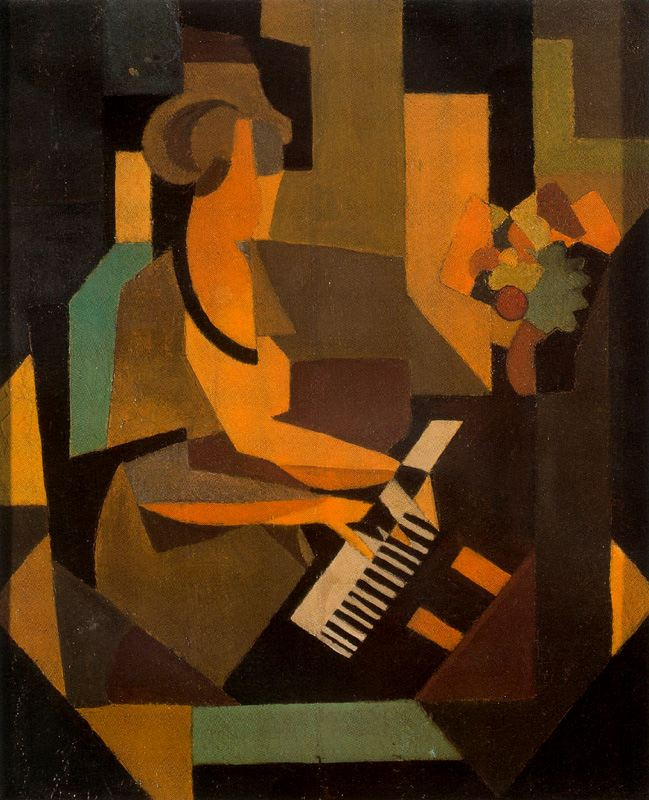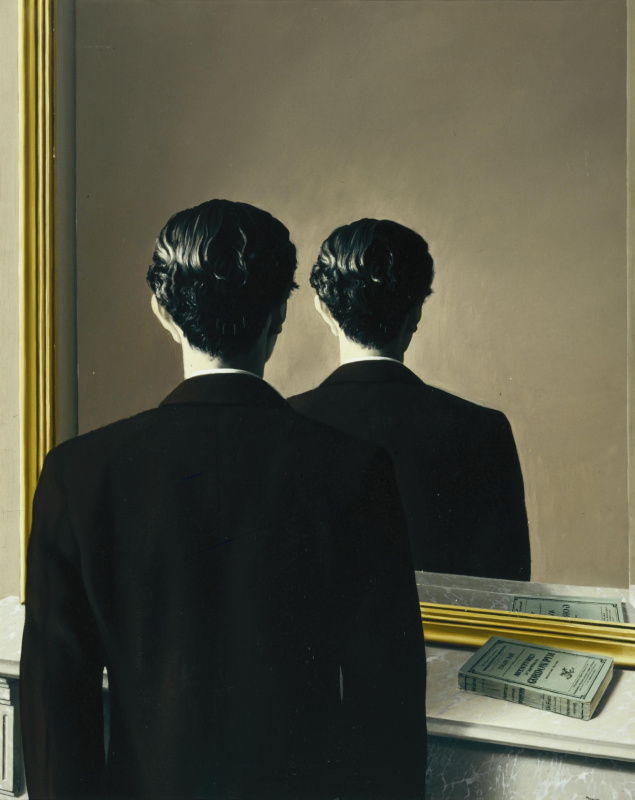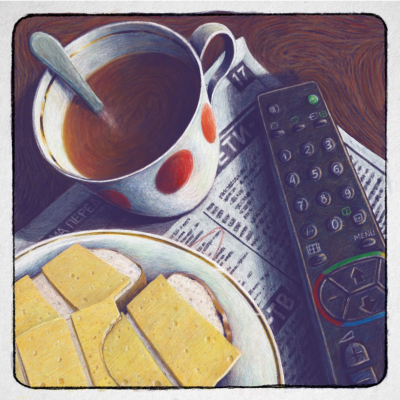René Magritte is one of those rare artists whose biography is not replete with scandalous details or eccentric antics and practically fits into the simple formula "was born, studied, married". Of course, except that we are talking about one of the most famous surrealists of all time. His personal life was so calm that it could even be called boring, if not for a couple of piquant moments that violate its measured and decent flow.
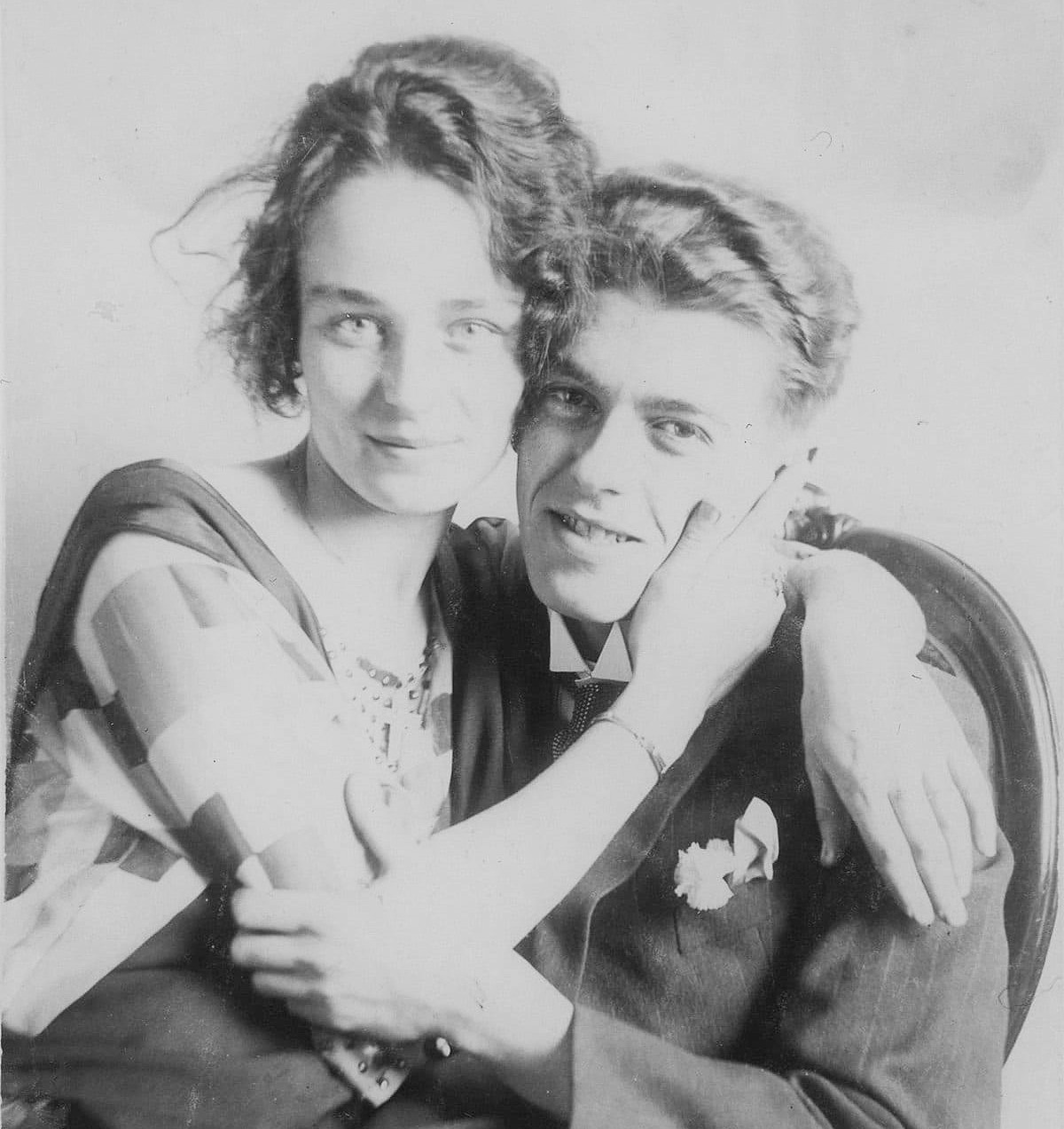
Butcher’s daughter
The youth of the future artist was overshadowed by tragedy: when he was 13 years old, his mother drowned herself in the river. After that, the family could not stay in the Châtelet commune, where the tragedy occurred, and Magritte’s father, along with his two younger brothers, moved to Charleroi. Two years later, he met a girl there with whom he would live in legal marriage for almost half a century. At the annual fair, René met Georgette Berger, a twelve-year-old daughter of a local butcher, and immediately fell in love.
Youth
1924, 50.5×41 cm
The teens enjoyed their carefree companionship for a year, until World War I parted them. Georgette’s parents moved to Brussels, and Magritte went to the Belgian capital in 1916, where he studied painting at the Royal Academy of Fine Arts. And in 1920, fate brings them together again: René and Georgette met by chance in the Brussels Botanical Garden. According to a legend, the young artist was extremely confused and for some reason lied that he was going to a meeting with his beloved.
Fortunately, the stupid trick could not separate the couple reunited after almost seven years of separation. Georgette waited for René to return from the army: from December 1920 to September 1921, he served in the Belgian infantry. And in June 1922 they got married. Before the artist became famous and began to earn money by painting, his wife brought the main income to the family. She worked part-time in a family’s art supplies store, where Magritte bought his paints.
Fortunately, the stupid trick could not separate the couple reunited after almost seven years of separation. Georgette waited for René to return from the army: from December 1920 to September 1921, he served in the Belgian infantry. And in June 1922 they got married. Before the artist became famous and began to earn money by painting, his wife brought the main income to the family. She worked part-time in a family’s art supplies store, where Magritte bought his paints.
Fame didn’t visit them for a long time, and he had to work in a wallpaper factory as an artist, as well as a graphic designer until 1926, when he was able to make a contract with the Le Centaure gallery in Brussels, which finally allowed him to devote himself to painting. Then Magritte created his first significant surreal work, The Lost Jockey, and a year later, his first solo exhibition took place. But critics were very sceptical about the exhibition, and the disappointed artist went to Paris to try his luck there. At that time the Parisian public had more reverence for the surrealists.
Lost jockey
1926, 39.5×54 cm
The stumbling cross
Georgette became the indirect reason for a quarrel between Magritte and his French colleagues. At first, everything went well: he made friends with André Breton and he officially accepted him into the surrealist group. In 1929, Magritte’s paintings were presented in one of the Parisian galleries, along with works by Dalí, Miró, Picabia, Picasso and other avant-garde figures. In the last twelfth issue of the Surrealist Revolution magazine, founded by Breton, Magritte’s essay, Words and Images, was published, it was devoted to the interaction of image and utterance. The artist illustrated his literary thought with his Treachery of Images painting, which became his brand work for many decades.
TheTreachery of Images (This is not a pipe)
1929, 59×65 cm
However the relationship between the Belgian and the Parisian surrealists was hopelessly ruined because of one unsuccessful dinner. The couple went to an evening party to Breton, who, according to the stories of another guest, Buñuel, was out of sorts that day. The writer recalled: "Breton suddenly pointed his finger at a small cross that Madame Magritte had around her neck, and announced that this cross was an outrageous provocation and that she could have put on another piece of jewellery when going to his house." Georgette felt uncomfortable with this statement, and her husband immediately came to her aid. According to Buñuel: "Magritte stood up for his wife, and for some time there was a vigorous argument. The Magrittes were impeccably polite and stayed with Breton until the end of the evening, but then the two men did not speak to each other for a while."
Georgette at the piano
1923, 44×36.5 cm
The artist shared a slightly different version of the event in an interview a few years later. Allegedly, Breton’s statement about jewellery in the form of religious symbols being bad manners was not addressed directly to Georgette. But it still hurt the spouses, so they were forced to hastily leave the dinner party. However, shortly thereafter, the Magrittes left Paris and did not communicate with Breton for the next eight years, to resume their business contacts only by 1937.

Paul Nougé. The Shadow and Its Shadow. Brussels, 1932
Photo source: artblart.com
Photo source: artblart.com
The quarrel with the leader of the French Surrealists coincided with the closure of the Brussels gallery, Le Centaure, cooperating with which allowed Magritte to make a living by painting. On his return to the Belgian capital, he again began working as a designer in an advertising agency he created with his brother Paul. But his paintings gradually became more and more popular. In 1936, the first personal exhibition of Magritte was held in New York, and two years later in the London Gallery.
An Old Fool
In 1937, the artist travelled to London, where he worked on a work commissioned by Edward James, the British patron of the Surrealists. Magritte had to paint three works for the ballroom in his house, and the collector himself appeared in two of his famous paintings: The Pleasure Principle and Not to Be Reproduced.The business trip abroad became fatal for the artist’s good marriage. In London, he suffered from boredom, which led to an affair with a local surrealist Sheila Legge. The 25-year-old beauty became famous after the 1936 International Surrealist Exhibition. Sheila took part in a spectacular performance for the opening of the exhibition in Trafalgar Square. She posed in a costume of the "ghost of surrealism" composed of a satin wedding dress, elegant black gloves and a mask of paper roses with ladybirds, completely obscuring her face. The photograph of Sheila Legg in the square surrounded by pigeons made by a French photographer Claude Cahun became the hallmark of the event.

Photo Source: goodreads.com
The image in The Great War painting of 1964 reveals a different theme (see the description of the painting by clicking on the image), but its visual embodiment resembles this photo of 1936.
The great war
1964, 81×60 cm
Sheila Legge’s relationship with René Magritte was short-lived: the artist spent just over a month in London. But they led to the fact that Georgette also started an affair, and her husband was partly its reason. In his letter to his friend, the poet Paul Colinet, he recklessly asked to try to brighten up René's long absence from home as much as possible. Paul overdid it a little: Georgette was seriously carried away by her husband’s companion and even started talking to him about the divorce. Back in Brussels, Magritte decided to go home, accompanied by a policeman. His goal was not entirely clear; he allegedly wanted to catch the two and was afraid of a scandal. He either was afraid to lose his temper and needed the supervision of a representative of the law, or hoped to shock the lovers with his presence and thus put an end to their relationship. However, it turned out to be not so easy.
Georgette Magritte
1934
During the German occupation of Belgium in 1940, Magritte hastily left for Paris due to possible persecution: he had previously made bold statements about the political situation and feared the consequences. Georgette did not go with her husband, since Colinet was not going to leave the country. The fact that she decided to stay because of the ongoing relationship with Paul is pretty possible as René lied to his relatives about the reason for her decision: she allegedly could not go on the trip due to a surgery to remove appendicitis. Despite the prolonged crisis, the Magrittes still managed to save the marriage, and they lived together for many more years, until death separated them.
Quiet haven
Apart from their temporary eclipse because of the love affairs, the couple’s life together was serene and not particularly outstanding. They led a secluded life and rarely left their cosy home or the city and even more so the country. Magritte was so restrained that he managed to work in his own living room without even staining the floor with paint. The artist claimed that he painted all female characters in his paintings from his wife. Before starting his work, he often resorted to the help of photographs to make a preliminary sketch , and Georgette often posed for him in such pictures.The couple never had children and they devoted all their care to their pet. Georgette was crazy about Pomeranian dogs, such as their favourite Loulou. It accompanied the Magrittes everywhere, so they always chose housing on the ground floors so that the dog could walk in the fresh air in the garden. René sometimes used Loulou as an excuse when he needed to do things he didn’t really want to do. During one of his rare trips abroad, Georgette invited him to visit an exhibition of an artist from their close circle. Magritte agreed, but at the last moment announced that he would not be able to go: "Loulou the Dog does not want to see this exhibition. We will wait for you in a café, drinking egg yolk liqueur."

Photo Source: kulturologia.ru
In 1983, an American musician Paul Simon wrote a song called René and Georgette Magritte with Their Dog after the War. He was inspired by a photo of the same name by German photographer Lothar Wollech, taken in the 1960s. According to the plot of the song, the spouses return to the hotel room with their dog and dance there to the melodies of old bands.
The family idyll of the Magrittes was interrupted by René's fatal illness: in 1967 he died of pancreatic cancer. Georgette survived him by 20 years and was buried next to him in the cemetery in Schaerbeek.
Georgette
1937, 65×54 cm
In the former home of the couple, the artist’s museum was created. In 2009, two armed robbers stole Olympia painting depicting nude
Georgette from there. But three years later, the painting was returned, as its fame did not allow intruders to resell it.






